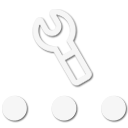
Advocate II
- 1,597
- First Name
- Erich
- Last Name
- Wise
- Member #
-
29953
- Ham/GMRS Callsign
- GMRS call sign: WRFL229
Yeah, the tires are 33" so a bit bigger but nothing crazy. I think you are right...for a full expedition I might throw it on the roof but not for smaller getaways. I might experiment by finding a good trail and trying different setups to see the handling differences.I can certainly respect your concerns here, but you drive a Suburban and let's face it, GM didn't exactly build them with weight or handling in mind.
The biggest factor is going to be size. If you're running stock(ish) sized spares, neither roof or rear bumper is going to make all that much difference. A standard armored bumper would weigh more hanging off the back and I highly doubt you'd notice any more body roll from a roof mount than what you already live with on the beast.
I'd say secure it inside and see if you can live with it. If not, hang it on the back/front. Or buy a repair kit and a compressor and leave the second spare at home. ;)







